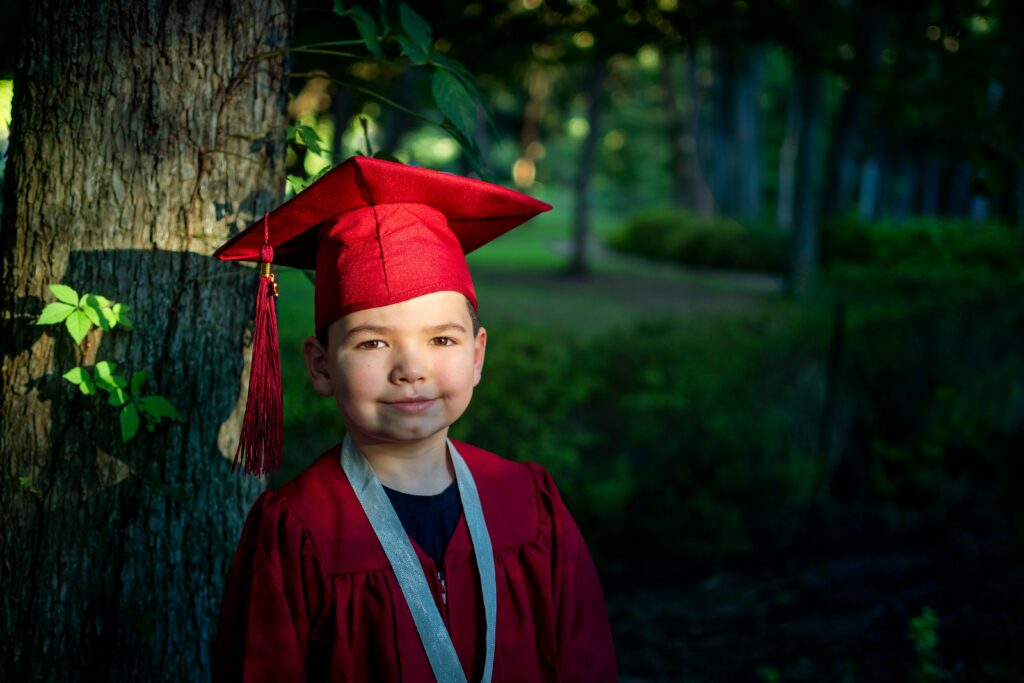
20 Self-Esteem Activities for Kids
rebekah
June 09, 2025
Do kids really need help with self-esteem? Absolutely, and implementing self-esteem activities for kids can help immensely.
Research shows that approximately 85% of people worldwide suffer from low self-esteem, and the impact starts young.
Kids with strong self-esteem tend to score higher academically, have healthier relationships, and cope better with stress. On the flip side, kids with low self-esteem often struggle with confidence, face social challenges, and are more prone to mental health issues.
But here’s the good news! You can play a significant role in helping kids build their self-esteem, and it doesn’t require magic or vast resources. A few simple activities and habits can make a huge difference. Here’s how.
Why Help Students Improve Their Self-Esteem?

Self-esteem forms the foundation for a child’s emotional and social well-being.
In fact, high self-esteem is linked to better mental and physical health, stronger social connections, and less antisocial behavior. The benefits don’t just stop at childhood, either. They ripple into adulthood and even old age.
Without a strong sense of self-worth, kids can face hurdles such as difficulty making friends, struggling with academic pressures, or falling into negative self-talk. Helping children value themselves builds resilience, boosts happiness, and prepares them to take on life’s challenges with confidence.
What Causes Low Self-Esteem?
Before we jump to solutions, it’s important to understand why kids might struggle with self-esteem. Some common causes include:
- Criticism or Negative Feedback: Frequent criticism at home, school, or among peers can chip away at a child’s self-image.
- Peer Pressure or Bullying: Kids who are teased or excluded might start internalizing negative messages.
- Unrealistic Expectations: Feeling constant pressure to meet high expectations can lead to self-doubt.
- Comparison: Seeing others achieve or excel can make some kids question their own abilities, especially in today’s social media landscape.
20 Self-Esteem Activities for Kids

Now that the “why” is clear, let’s focus on the “how.” These engaging, practical ideas will help your students see their worth and feel good about themselves.
1. Create a Memory Box
Does your student light up when they remember winning a soccer game or acing a school project?
Help them hold onto those valuable memories by creating a personalized memory box. Encourage them to fill it with notes, photos, certificates, or small keepsakes that celebrate their achievements and happy moments. On tough days, they can revisit the content to remind themselves how capable and loved they are.
Pro Tip: Add fun art materials like stickers or colored markers so they can decorate their box and make it uniquely theirs.
2. Practice Role-Playing
Role-playing is an excellent way to build confidence and teach kids how to handle challenging situations. Whether it’s practicing how to introduce themselves to someone new or standing up to a bully, role-playing offers a safe space to prepare for real-life scenarios.
Get creative! Play the part of a friendly stranger or even a tricky situation, and applaud their efforts after each try. Small wins during role-play help build self-assurance that transfers into everyday life.
3. Come Up with Affirmations
Positive affirmations are powerful. Help your students create a list of simple, uplifting statements they can say out loud every day. Think along the lines of:
- “I am kind.”
- “I can learn from mistakes.”
- “I am brave enough to try new things.”
Repeating these phrases helps kids develop a more positive inner dialogue and reframe self-critical thoughts.
As a bonus tip, you may want to write these affirmations on colorful cards and place them in spots like their mirror or lunchbox for a surprise confidence boost.
4. Assign Chores and Tasks
Kids feel valued and capable when they contribute to their home, classrooms, or community. Assigning age-appropriate chores is a simple way to show them that their efforts matter.
Whether it’s watering plants or helping clean up the classroom, knowing they’ve played a role in something bigger reinforces self-worth.
Start small, then gradually increase the responsibility as they grow more confident. A job well done deserves recognition, so make sure to offer praise and acknowledgment.
5. Write Down Strengths and Differences
Encourage your child to explore what makes them unique and special. Sit down together and help them list their strengths or things they like about themselves. Maybe it’s a talent, a personality trait, or even a small act of kindness they did that day.
You can also talk about how differences make everyone unique, turning individuality into a strength they can be proud of.
6. Encourage Sports and Team-Based Activities
Nothing builds confidence like collaboration. Introduce your child to sports or team-based hobbies where they can experience teamwork, celebrate group successes, and gain a sense of belonging. Whether it’s joining a soccer league or participating in a robotics club, these activities build interpersonal skills along with self-esteem.
If traditional sports aren’t their thing, consider other team-building options like drama, dance, or art collectives.
7. Read Social Stories
Social stories are short, illustrative narratives that help kids see themselves in different scenarios. Whether it’s a story about trying something new or managing friendship conflicts, these stories create relatable experiences that show kids how valuable, capable, and resourceful they are.
You can craft your own based on your students’ needs or choose from a wide range of pre-made stories available online. If you can, personalize the stories with your students’ names or situations they’ll recognize for added engagement.
8. Play 5 Things I Like About Me
This is a simple yet powerful exercise. Gather the group and ask each child to name five things they like about themselves. It could be as big as “I’m kind to my friends” or as small as “I’m really good at drawing dinosaurs.”
The goal is to shift the focus onto their strengths and help them see just how awesome they are. You can also turn this into a creative poster activity, where kids write their five things on a colorful sheet and decorate it however they like.
9. Write Down Goals
Having goals gives kids something to aim for, which helps build self-worth as they achieve them. Help your students set simple SMART goals (Specific, Measurable, Achievable, Relevant, Time-Bound).
Some examples could include:
- Raising their hand at least once a day in class.
- Learning one new skill at recess (like skipping rope).
- Completing one book by the end of the month.
Encourage them to revisit these goals weekly, and celebrate when they hit milestones. Another tip? Create a goal wall in the classroom where your students can post their goals and track their progress.
10. Develop a “YOU” Manifesto
This activity is about self-discovery and expression. Ask kids to write a manifesto that answers one question: “Who am I and who do I want to be?”
They can include anything—from their favorite qualities about themselves to traits they’d like to develop (“kind,” “brave,” “helpful”).
Allow them to decorate and display their manifesto somewhere special, like their desk or a personal folder.
11. Create a Vision Board
Vision boards are a hit for a reason! They allow kids to visualize their goals and dreams in a creative, tangible way. To do this:
- Gather old magazines, construction paper, and markers.
- Have them cut out pictures, words, or symbols that inspire or excite them.
- Glue these onto a piece of poster board that represents their future goals.
This hands-on activity combines creativity with self-reflection, helping kids see what they want to work toward. You can also do a quick “vision board presentation” in class where everyone shares one or two things from their board.
12. Keep a Gratitude Jar
Focusing on what they’re thankful for shifts kids’ attention away from negativity and onto positivity. Give each child a jar (or box) and slips of paper. Every day, they can write down one thing they’re grateful for and drop it in.
At the end of the week (or month), they can pull out their notes as a reminder of the good things in their lives.
13. Write a “Love Letter” to Myself
Now, a little letter-writing magic. Ask each student to pen a letter to themselves about what makes them special. Encourage them to imagine they’re talking to a best friend.
Prompts could include:
- “Here’s why I’m proud of myself…”
- “Things I love about me are…”
- “I’m excited about…”
Save their letters (without reading them, of course!) and return them a few months later. They’ll be thrilled to re-read their positive thoughts.
14. Read Self-Esteem Centered Books
Books have this magical way of instilling life lessons without kids even realizing it. Choose titles that uplift, inspire, and resonate with themes of self-esteem. Popular options include:
- The Invisible Boy by Trudy Ludwig.
- Amazing Grace by Mary Hoffman.
- I Am Enough by Grace Byers.
These stories help kids see themselves reflected in characters while learning valuable lessons about self-worth.
15. Practice Self-Praise Journaling
Writing isn’t just about essays and reports. Self-praise journaling gives students a chance to recognize and celebrate their own accomplishments. Encourage students to jot down their wins each week, whether it’s acing a quiz, helping a classmate, or conquering that tricky math problem.
Why focus on the positives? Research shows that reflecting on achievements helps kids build awareness of their strengths. Plus, it feels good to pause and appreciate what makes them unique.
For inspiration, check out some writing prompts designed to promote self-reflection here.
16. Participate in Community Service Projects
Want to show your students that they can make a difference? Get them involved in local community service. Activities like helping at food drives, cleaning up a park, or even starting a class recycling program can work wonders for their self-esteem.
When kids see the impact of their actions, it fosters a sense of pride and purpose. Bonus points if you guide them to reflect on how teamwork contributes to a community’s success.
17. Use an Emotional Thermometer
Not every kid walks into class ready to explain how they feel. That’s where an emotional thermometer shines. It’s essentially a visual tool where students can pinpoint their emotional “temperature,” like calm, upset, or excited.
By helping kids identify their emotions, you’re teaching them emotional awareness and regulation. How about letting students design their own thermometer? A little ownership can make the activity even more engaging.
18. Work to Develop a Growth Mindset
The idea is simple but powerful. Talk to your students about how mistakes aren’t failures but stepping stones. Then challenge them to step out of their comfort zones.
For example:
- Set a math problem slightly above their current level.
- Encourage them to try reading a chapter of a book solo.
- Give group tasks that require problem-solving.
Celebrate their efforts, regardless of the outcome. This reinforcement makes it clear that progress matters more than perfection.
19. Build an Achievement Collage
Kids are visual learners, so why not give them a creative outlet? An achievement collage lets students fill a board with pictures, words, or drawings representing accomplishments and aspirations. Think of it as a confidence vision board.
Hang the collages in the classroom (with permission) or have them as personal keepsakes. This activity reinforces the idea that each student has a story of success worth celebrating.
20. Conduct Cultural Research Projects
Introduce a new twist to traditional projects by having students explore cultures, traditions, and history from around the world. Encourage them to present their findings creatively, whether through a mini-exhibition, slideshow, or even a short story.
Not only does this activity feed curiosity, but it also builds students’ sense of competence. They’ll learn about diverse perspectives and take pride in their discoveries.
Final Thoughts

We know that teaching goes beyond academics. It’s about shaping resilient, compassionate, and confident kids. Activities like self-praise journaling, emotional thermometers, and achievement collages offer simple but effective ways to foster self-esteem.
Looking to take social-emotional learning even further? Check out Stanfield’s Whole School Cool program, which provides comprehensive tools to support emotional and social intelligence at every grade level.
Make your classroom a confidence-building hub. Start small, keep it fun, and watch your students shine brighter every day!
FAQ
What activities promote self-esteem in children?
Activities like journaling, community service, and cultural research projects encourage children to recognize their strengths and contributions. They also provide opportunities for reflection and growth.
What are self-esteem activities?
Self-esteem activities are tasks or exercises designed to help children develop confidence, recognize their value, and build a sense of purpose.
What is the mirror self-esteem activity for kids?
This activity involves kids saying positive affirmations about themselves while looking in the mirror. It reinforces self-appreciation and confidence.
rebekah
Latest posts
ALL POSTSJanuary 13, 2025


